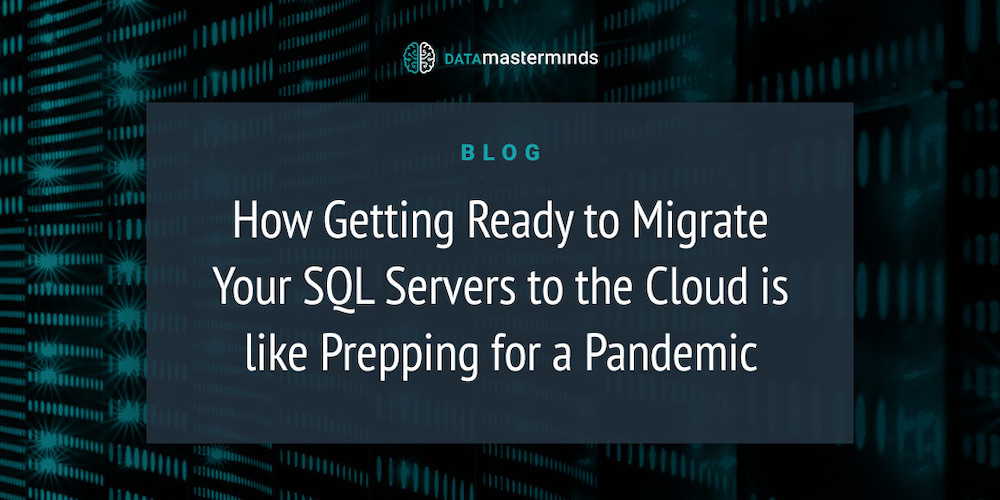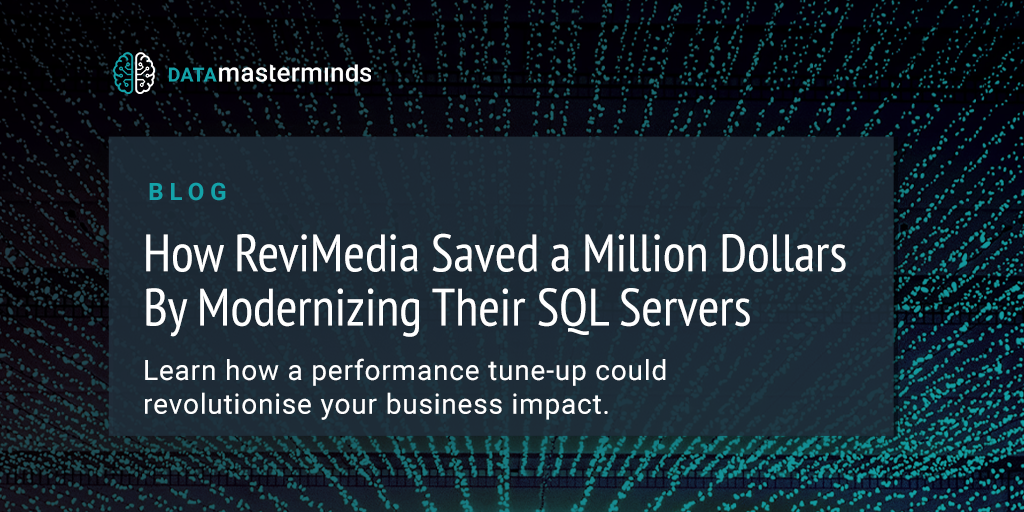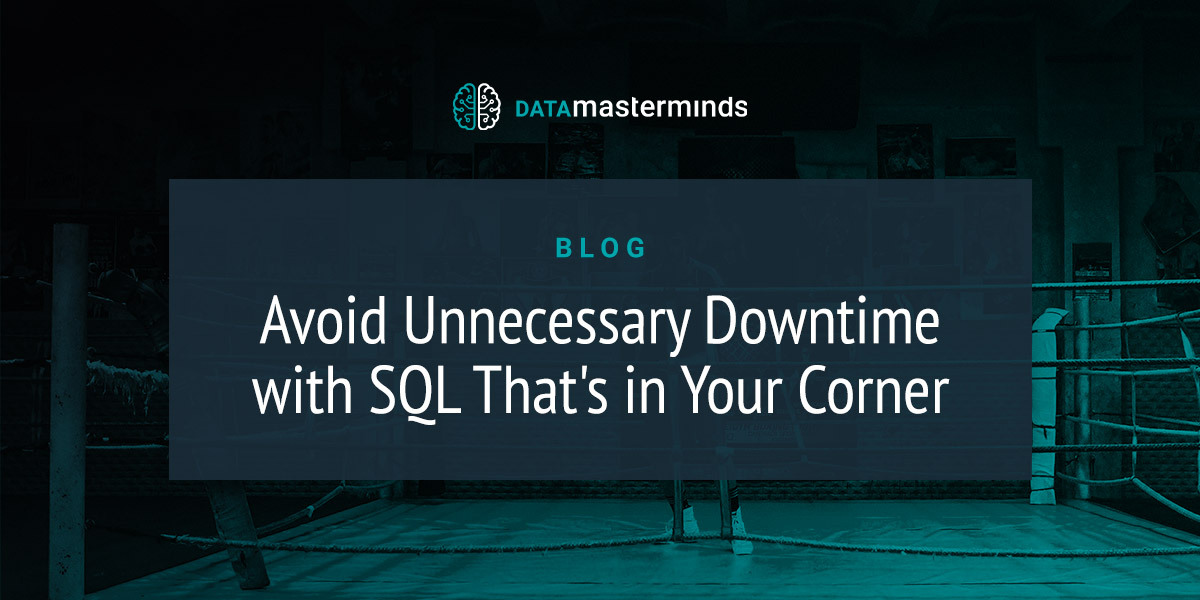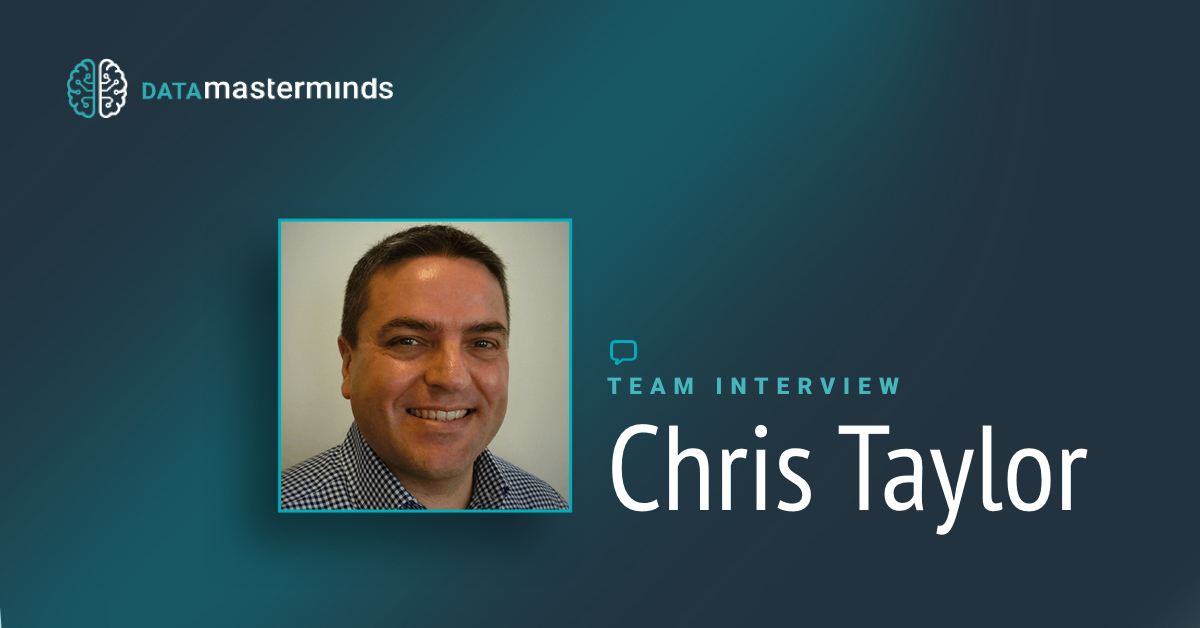The COVID-19 pandemic sparked a sudden urgency for organizations who had been considering data modernization. All of a sudden, remote working needed to work, and work well, immediately. And we will continue to see the ways technology has been used to cope with our new reality. But we’ve also started to notice ways in which our pandemic prep mirrors our technical projects. Maybe we’ve been spending a bit too much time cooped up, but indulge us! Cloud migration is a hot topic at the moment. If you have it on your ‘to-do’ list for 2021, here are helpful tips we’ve taken from the pandemic to help you prepare.
Get Your Sourdough Starter Ready—You’re Going to Be Here for a While
In our experience, a larger scale migration can take upwards of nine months to prepare and execute. This isn’t necessarily a technical limitation of moving from one version of SQL Server to another, but rather a case of making sure that all the edge-cases and “shadow IT” systems are identified before such a move can be completed. The “slow and steady” approach to cloud migration is key in making sure that nothing gets forgotten or left behind. We regularly identify systems that were flying under the radar of the DB team (or sometimes the entire IT department). These systems often play critical roles inside businesses that have built small helper systems around the limitations of the IT infrastructure and processes.
There is no option to rush this preparation phase, you end up paying double (or more) on the back end when you must clean up a half-finished migration. So settle in, and try not to watch the clock—this is going to take a while.
Identify Who Will Be Most Affected & Deal with Any Political Issues
When we over-communicate with the most affected people and tell the truth about what they can expect, people appreciate it. Things go more smoothly, and there is simply less uncertainty. During the preparation stage of a migration, it is essential to communicate with all affected departments and key-users. Covering a larger footprint in your organization can allow you to avoid pain later down the road. Communicating early and communicating often while encouraging feedback from the affected departments will ensure that side effects and ancillary systems are identified that could otherwise remain unknown to you and your team. By including other departments earlier, you can also gain support from them in your efforts—they are looking out for their system’s health and have a vested interest in your changes being implemented correctly.
Take Stock of Your Pantry
Just like you need to know how much of each critical item you’ll need to weather another lockdown, your cloud migration also requires a well thought-out plan. One of the first steps is to identify what exactly you have in your environment before you can decide which systems should be migrated at all. Cataloguing your server landscape will give you an overview of what systems you have and in what state they are (patch level, size, versions etc.). This information is key to drawing up a roadmap for the upcoming migration. In particular, knowing what workloads are currently in place is necessary to make the right choices from a capacity planning stance.
Using active monitoring solutions (e.g. Redgate SQL Monitor) and the Data Masterminds Portal you can get a clear overview of the state of your data platform environment. Together these tools provide an estate configuration overview and long-term capacity and performance metrics to help with capacity planning.
Many companies approach a migration (whether on-prem or to the cloud) as a big bang scenario. ‘Everything must go from the old to the new system!’
This approach is rarely the best option, because it increases the likelihood of (partial) failure of the migration. A more slow and steady approach will provide more security and stability to a migration project. After each sub-system is migrated and stabilised, the next system can be moved. A piecemeal migration in this fashion will also enable your team to become more familiar with the new environment during the migration process, increasing the likelihood of success in each following partial migration.
Tackle Your Reading List or Learn a New Skill
Now is the perfect time to make a dent in your ‘to-read’ pile by researching different migration strategies. (The latest Danish detective novel can wait). You’re not working on anything else, right?! 😉
Here is an excellent resource that looks at two different migration strategies. There is the ‘lift-and-shift’ migration which lets you migrate applications as they are, without the risk or expense of code changes. Conversely, you may want to do your migration differently if you want to use features available in newer versions of SQL Server, or if you need to upgrade legacy SQL Server and/or OS versions that are no longer in support.
Many of us used 2020 as a time to brush up on our French or learn a new craft. This could be the right time to give your team the opportunity to upskill.
A solid training foundation is important for successful organisational change. Take a look at the free training available on Microsoft Learn including courses on Azure fundamentals, solution architecture and security. Encourage your team to explore Azure certification as well.
If you’re not sure—that’s what we’re here for! We’ve written a blog article about when a newer version of SQL Server is recommended. But we’re also available to chat about what makes the most sense for your cloud migration, just schedule a call with our team.
Get Your Finances in Order
Your restaurant bills have turned into uber eats and cocktail kit budgets. Sometimes it’s hard to untangle each line item. What did you order from Amazon that day again? These disorienting feelings are exactly how it feels when your capital expense costs turn in operational expense costs, and you just want to understand where all the money went. We’ve written a short blog article that addresses the popular question: Will the cloud save me money? The short answer is…maybe.
As priorities shift, it’s vital to strike the balance between what you want to do and what you can afford to do. If you need to make a business case for cloud migration, you can use this free Total Cost of Ownership (TCO) calculator to plan for costs and estimate your potential savings.
Remember, It’s Okay to Ask for Help
We all need to remember to take care of ourselves through this pandemic. And while throwing yourself into work may help distract you from the situation, you should also take care of yourself through a massive migration project! Take things slow. Create a Plan B. Or ask for help.
At Data Masterminds, we work with companies like yours to make your cloud migration as painless as possible.
Book a call with us today.
Love infographics? Download ours for easy sharing of this article!









